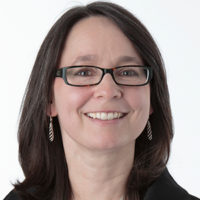Did you know that the U.S. Department of Agriculture helped nearly 900,000 seniors and 2.15 million WIC (Women, Infants & Children nutrition program) recipients to access fresh fruits and vegetables directly from local farmers at farmers’ markets in 2010?
Or that more than 2,300 schools nationwide participated in farm-to-school programs in 2011?
These and other fun facts are part of a new report and multimedia web tool unveiled by the USDA and its “Know Your Farmer, Know Your Food” (KYF2) initiative yesterday. The KYF2 “Compass” is a portal to data from more than two dozen USDA programs that support local food efforts, and provides examples and personal stories illustrating these programs at work.
It’s also a bulked-up defense against critics of USDA support for anything that doesn’t fit the “Big Ag” mold.
“Know Your Farmer” Under Attack
Given that it’s little more than a website and some staff time for coordinating other programs, you wouldn’t think KYF2 would need defending. But the department’s work on local food systems has come under increasing attack from agribusiness and its proponents in Congress.
In 2010, a trio of Senators wrote to USDA Secretary Vilsack to express “serious misgivings” about the initiative. The letter charged that KYF2 is geared toward “small, hobbyist and organic producers whose customers generally consist of affluent patrons at urban farmers markets” (class warfare, anyone?), and questioned the USDA’s legal authority to operate the initiative.
The attacks haven’t stopped there. Last June, the House of Representatives passed a 2012 spending bill that sought to eliminate the initiative by stripping its funding.
(The joke was on Rep. Virginia Foxx (R-NC), that provision’s sponsor, as KYF2 has no funding of its own. And after negotiations with the Senate, the final bill only required the USDA to report to Congress on KYF2’s activities…which brings us to the Compass.)
Even more absurd, this past January, Senator Tom Coburn (R-OK) inexplicably took issue with a miniscule State of Oklahoma program that works with the feds to promote local farmers markets.
Hobby Farmers? Hardly
Critics complain that USDA spending to advance local food systems is a waste of money because it caters only to small numbers of rich urban consumers. Not so.
As I wrote last fall, USDA data show that local and regional food systems are a nearly $5 billion-a-year industry. They connect rural and urban communities in every state, and involve farmers and consumers at all income levels.
Moreover, USDA researchers have found that small and mid-size farmers who sell food locally are more likely to report farming as their primary occupation than their similarly sized counterparts who don’t produce for local markets. So the “hobbyist” claim doesn’t hold water either.
And far from benefiting only “affluent urban locavores,” the programs under the KYF2 banner are aimed at spurring job growth, improving nutrition for low-income consumers, helping new farmers get started, and keeping existing farmers on the land.
Some examples from the Compass:
- Real Food Farm, an urban farm in Baltimore, extended its season by building an unheated greenhouse with support from the Natural Resources Conservation Service’s High Tunnel Pilot Study. The farm now grows and sells produce year-round with a mobile market that serves the city’s low-income neighborhoods.
- The Winston County Self Help Cooperative in Mississippi received a Small, Socially Disadvantaged Producer Grant from USDA Rural Development to support local farmers and youth garden projects across this poverty-stricken rural county. Through technical assistance, leadership training, estate planning, and youth development, the grant is helping farmers improve their businesses, and introducing young people to career opportunities in farming.
- The Northern California Regional Land Trust in rural Butte County received a 2010 grant from USDA’s Beginning Farmer and Rancher Development Program (BFRDP) to preserve farmland and help new farmers increase their sales in local and regional markets. With more than 40 projects in 40 states that year, BFRDP trained thousands of new producers carry on the nation’s farming tradition.
At UCS, we often think the USDA’s vision of agriculture is wrong. But even on a shoestring, support for local food systems is one thing the department is getting right.
See where local food systems can take your community by checking out the KYF2 Compass. And help UCS call for increased USDA support for local food systems here.
